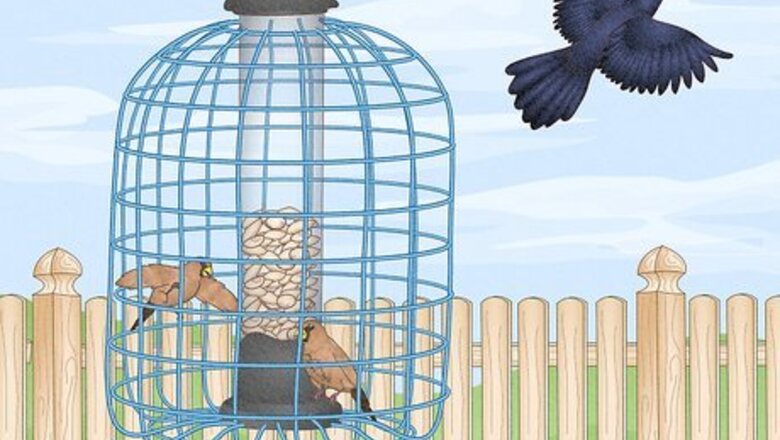
views
- Use bird feeders designed for smaller birds. Opt for caged feeders, small openings for seeds, and short perches.
- Make your yard inhospitable for grackles by adding deterrents that scare or confuse them. Try predator decoys, noise deterrents, or reflective tapes.
- Apply bird repellent gels and sprays to make landing in your yard uncomfortable for grackles.
Install grackle-resistant bird feeders.
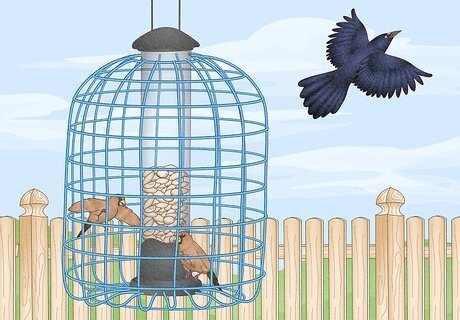
Grackles will look for a new food source if you offer none. Grackles are medium-sized birds. To limit the access grackles have to your bird seed, use bird feeders designed for smaller birds. That way, grackles are too big to enter and the small birds you love can eat all they want. Caged feeders with smaller openings are a great option to stop larger birds from grabbing your seed. You can also place a wire cage around a feeder you already own. Grackles do not like to hang upside down. Buying an upside-down bird feeder would be a great option to keep grackles away from the bird seed.
Scare away grackles with noise deterrents.
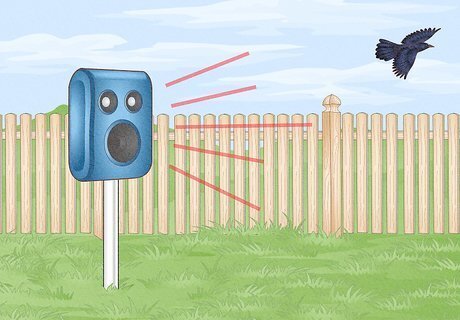
Sounds that upset grackles will turn them away. Noise deterrents are a humane and effective method to keep grackles off your property. Pick one that sounds like the grackle’s natural predator, such as a hawk or owl. The sound of a predator will tell grackles to steer clear of your property. You can also use a deterrent that sounds like a grackle in distress. This, too, will alert grackles to danger and cause them to avoid the area. Place your noise deterrent in areas where grackles are most likely to roost. One downside to noise deterrents would be the unwanted deterrence of smaller, less aggressive birds that you may enjoy. Noise deterrents are best used in large fields to protect crops.
Place a predator decoy in your yard.
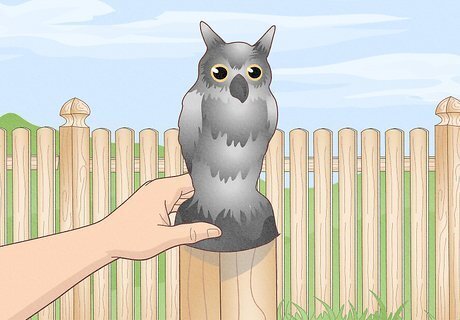
The site of a potential predator bird will make grackles wary. If a grackle sees what they think is an eagle or an owl in your yard, they will know your property is inhospitable. Add a predator decoy where grackles tend to land as a simple and very quick option that involves very minimal upkeep. Gradually move your predator decoy throughout your property to give the illusion of movement and make the decoy more believable to grackles. A predator decoy may inadvertently keep away more friendly birds from your property.
Reduce the size of your bird feeder perches.
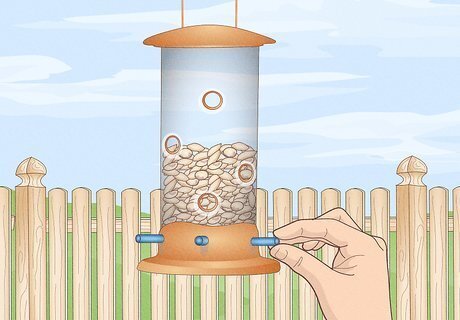
If grackles can’t fit on the perch, they’ll look for somewhere else to eat. Pick bird feeders with smaller perches that provide no room for a grackle to land. Grackles need a decent sized perch in order to eat and don’t tend to hover. With no place to land, the grackles will leave. Many store bought bird feeders provide removable perches. A lot of smaller birds can hover while eating from a bird feeder, so feel free to remove the perches. You can also adjust the size of your bird feeder's perch by trimming them to only accommodate smaller birds. Tap them down with a hammer or use a small rotary tool to trim your perch to approximately ⁄8 to ⁄8 inch (0.95 to 2.22 cm), too small for grackles.
Change your bird feed.
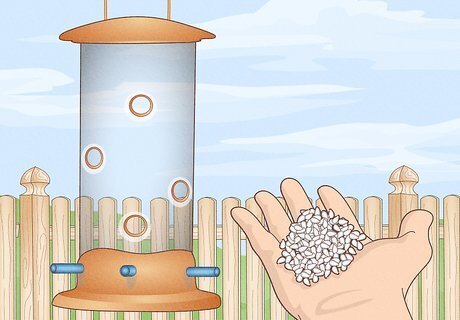
Switch to less desirable food for grackles. Like many other non-native birds, grackles prefer a diet of bread, corn, wheat, millet, fruit, and sunflower seeds, although they will eat just about anything. Discourage grackles with food they don't like, such as safflower, nyjer, or thistle seeds. Safflower, nyjer, and thistle seeds are also great for attracting finches, chickadees, and other small birds. Since grackles are not picky eaters, they may be desperate enough to eat food they would normally dislike. Experiment with different bird feed to see which works best at keeping the grackles away. Safflower seeds are harder seeds, meaning certain birds, like some sparrows, will have difficulty opening and eating them. Keep this in mind if you would like to attract these birds.
Discourage grackles from landing with bird repellent gel.
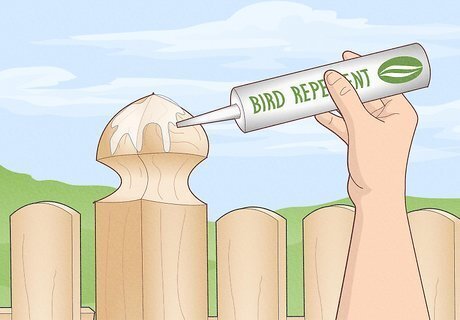
Gel will irritate the grackles' feet. Designed specifically to make landing uncomfortable, bird repellent gel is another humane method of diverting grackles. Apply the gel to a clean, solid surface frequented by grackles, such as a fence. The birds will soon recognize the deterrence and avoid the area. Some brands and types of bird repellent gel may work more than others so there may be a trial and error period to see which gel is best suited for your situation. Since there is no grackle specific repellent gel, this method may prevent other larger sized birds, like pigeons and starlings, from returning to your property as well.
Fly predator bird kites.
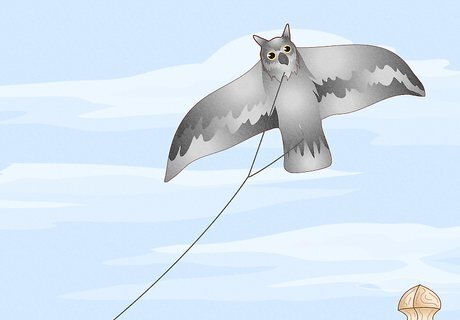
Kites that look like eagles, hawks, and owls can scare off grackles. Investing in a few predator bird kites is an affordable and fun way to prevent grackles from making a home on your property. Attach one of these kites to a high traffic area around your property. Predator bird kites can be moved from location to location on your property to mimic movement. The grackles will remember the hovering threat and avoid your backyard. If you live in a high wind area, this may not be the most suitable method for you.
Remove roosting areas.
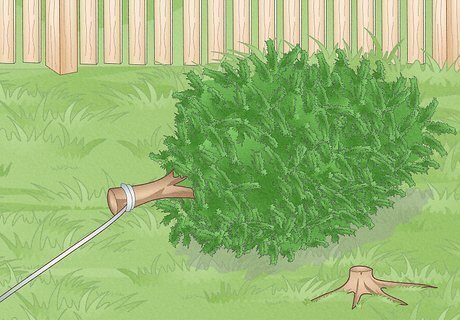
With no place to make a home, grackles won’t build one. Grackles prefer to nest in areas with the most coverage to protect them from their natural predators. To limit the amount of locations where grackles can roost, remove unwanted bushes or shrubs. If removing the shrubbery is too extreme, you can trim them. Grackles can also make any cool and covered area their new home, so look out for unattended grills, cabanas, and sheds. Make sure they are properly maintained and fully sealed. Gaps in your home’s siding or roofing can also become a prime spot for grackles to roost. Repair and replace any damage to the outside of your home to prevent the grackles from sharing your home rent-free.
Deter grackles with ultrasonic bird repellents.
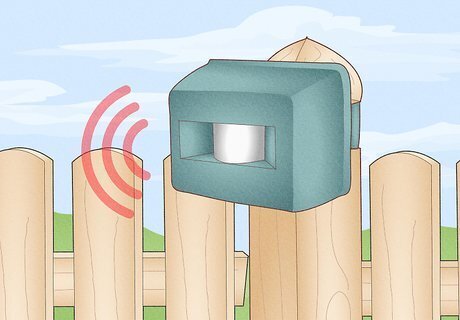
Grackles can’t stand the pitch ultrasonic bird repellents emit. Many birds hear at different frequencies than others. Ultrasonic bird repellents are highly adjustable and can even deter other pests, like mice. Multiple repellents can be used throughout your property, as long as you have access to an outlet. Most ultrasonic bird repellents are fairly affordable and customizable to fit your needs. They are also low profile, so they won't be an unruly eyesore on your property. Depending on the model of your ultrasonic bird repellent, they can also be equipped with a visual deterrent that works in step with the ultrasonic pitch.
Use reflective deterrents.
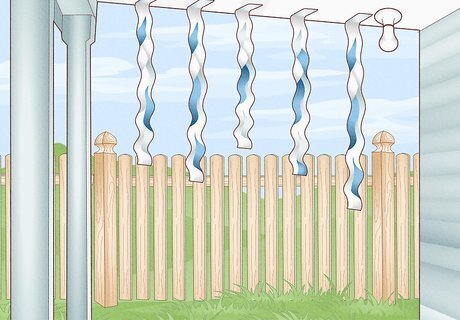
Reflective surfaces bend light in a way that confuses grackles. Hang mirrors, bird tape, or even metallic ribbons near areas where grackles frequent to prevent these birds from feeling comfortable on your property. Place reflective deterrents near places grackles like to roost, such as shrubs, trees, or nooks on your property. Bird tape is a reflective adhesive that you can apply to any area on your property that you want to keep grackles or any other nuisance bird away from. Reflective deterrents work best in ample sunlight during the daytime, so they will be much less effective on cloudy days or in areas with plenty of shade.
Spray areas of your property with a liquid bird repellent.
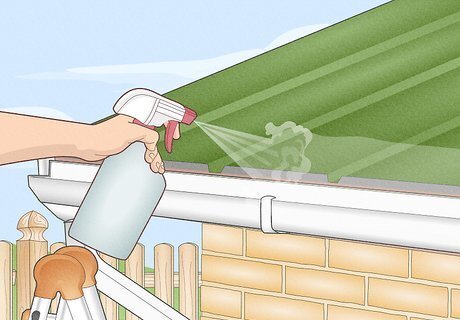
Liquid bird deterrent is easy and effective to use. Most repellent sprays use a chemical known as methyl anthranilate, which is a bitter irritant to many birds, including grackles. Spray this harmless chemical to prevent the bird from hanging around your property or returning in the future. Liquid bird repellent is a versatile option. Apply it to areas grackles frequent, such as shrubs, roofs, siding, and even trees. This bird repellent may need to be reapplied often in areas of high rainfall.
Change when you fill your bird feeder.
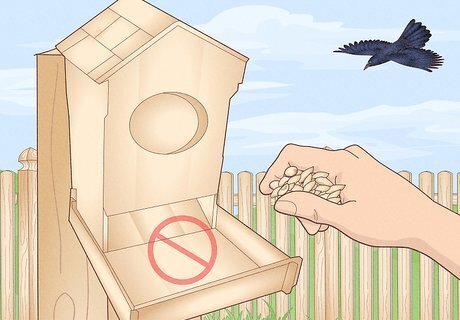
Avoid adding seed when grackles expect you to. Grackles eat when they can, but they will get used to a schedule. If grackles are constantly bombarding your bird feeder, change the times you refill it. This disruption can lead to grackles looking elsewhere for food. You can completely change your routine or even make the feeding less routine. Make your feeding times unpredictable. This will encourage the grackles to seek out a more stable food source. One side effect to changing your routine is the possibility of scaring off other birds as well, which may be undesirable for bird lovers.
Hire a professional.
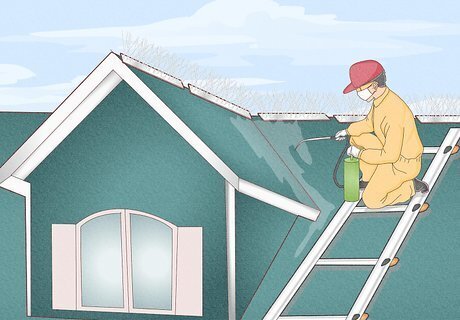
Let a bird control professional handle your grackle problem. If you’ve exhausted all options and your problem persists, consider hiring an expert for additional help. A professional can safely remove the grackles and other bully birds that wreak havoc on crops, gardens, and other bird populations Calling a professional may be costly upfront, but it can save you money in the long run if your property is large or your grackle population has gotten out of control. Professionals can help you decide which is the best course of action for your property and aid in preventing grackles from returning in the future.


















Comments
0 comment